Abstract
Several case reports in the literature mention sexual offenses committed by patients with Asperger syndrome. There are no clear data in the literature to distinguish circumscribed behavior from actions resulting from sexual arousal. In this case, we had to assess the criminal responsibility of an adolescent girl diagnosed with Asperger syndrome according to DSM-5 who had been charged with possession of child pornography and sharing this material on social media. This case is a reminder that circumscribed behavior in Asperger syndrome may cause forensic incidents or misunderstandings. When evaluating sexual offenses, it is critical to receive a detailed history of sexual development, the motives of actions, and social-sexual knowledge in order to distinguish circumscribed behavior from sexually deviant behaviors.
INTRODUCTION
While common developmental disorders (CDD) are reduced to a single diagnosis under the heading of autism spectrum disorders (ASD) in the Diagnostic and Statistical Manual of Mental Disorders 5th edition (DSM-IV), the integration of patients with Asperger syndrome (AS) in the DSM-IV is debatable. Children and adolescents with AS, just like children and adolescents with ASD, may present at the clinic with repetitive behaviors (ritualized verbal and non-verbal behaviors, stereotyped motor movements, etc.) and circumscribed interests. Rigidly repetitive behavior and problems in social relations may in some situations cause inappropriate sexual behavior (1,2). In children and adolescents with AS, inappropriate sexual behavior such as public masturbation, inappropriate touching of people, fetishism, kissing of strangers, sexual violence, or intense interest in pornography may derive from the main symptoms of autism (1,3). For example, downloading and distributing child pornography carries a great risk for children and adolescents with ASD to encounter legal problems. Studies about ASD and inappropriate sexual behavior are becoming more common and receive more attention.
Pedophiliac disorder is defined in the DSM-IV as one of the paraphilias (4). With the innovations in DSM-IV, repeated use of child pornography became one of the diagnostic determinants of pedophiliac disorder (4). On the other hand, for a diagnosis of pedophiliac disorder it is required that the patient is at least 16 years of age and at least five years older than the child or children in question (4). When the criteria for pedophiliac disorder are not met, we can speak of pedophiliac behavior. It has been reported previously that children with ASD may display pedophiliac behaviors (5). According to some authors, children and adolescents with AS may be behind in their sexual development mentally compared to their peers and thus exhibit inappropriate sexual behavior (6,7). Social and behavioral symptoms of ASD can affect the sexual development of individuals with AS (2). The absence of peer relations can cause a loss of opportunities to acquire knowledge about normal sexual development (8,9). As adolescents with AS do not find opportunities to talk about sexual issues with their peers, they may use the internet in order to find information about sex (7). In addition, children with AS are focusing on circumscribed fields of interest and get intensely attached, which may lead them to download and watch more pornographic material (5,10): The interest of individuals with AS will not remain limited to a superficial internet search such as is the case in children with a typical development; rather, their interest will induce these children to search obsessively in depth. This may facilitate their exposure to child pornography (11). Adolescents with AS can thus be labeled with pedophiliac disorder and get into conflict with the criminal justice system. Child psychiatry experts, when responding to inquiries requested by court or prosecutor, have to assess the criminal responsibility of children with AS very carefully.
Our case was a 15-year-old adolescent girl with AS referred to our clinic who was under criminal investigation because of child pornographic images found on her computer which she had shared on social media.
CASE
B.A., a 15-year-old girl, was referred to our clinic by the judicial authorities as a legal case charged with keeping child pornographic images on her computer and sharing them on social media. We were requested to assess if she presented symptoms of AS or obsessive-compulsive disorder (OCD) and if the said actions were an effect of such symptoms.
According to the history received, she had been chatting via social media with an unknown person who had been adding him- or herself on social media. This person, using a fake account, had brought up the issue of naked people and continued the conversation on this topic. Suddenly, the other person asked her to send pictures of naked people. B.A. sent them without further questioning. As the correspondence continued, B.A mentioned naked child photos, especially of famous children, that had been an issue several months earlier. According to what B.A. stated in the consultation, the stranger then wanted her to send naked child pictures. She then searched on the internet “naked child pictures, visuals” and sent the pictures she had found as a link to the stranger. At the same time, she sent some naked child photos that she had previously found on a pornographic site and saved to her computer.
In the consultation, she explained that she had been researching famous children for years and continuously done internet searches. According to her, everybody would want to see naked people and be curious about them. When asked if she thought that watching, downloading, and sharing of the naked pictures she had downloaded was legal, she said that, given that they were on the internet, they would be legal, and the children’s photos could not have been taken against their will.
As to her history, she had been born by spontaneous vaginal delivery after unproblematic pregnancy as a first child. At the age of 9 months, she had begun to walk and utter her first words. Toilet training was achieved at the age of three. As a baby and in early childhood, she did not like to be caressed or kissed. She loved to play with babies at home and played with girls her age when outside. Regarding her family history, it was learned that both parents were alive and healthy, and there was no history of psychiatric diseases.
According to information received from the mother and from herself, the patient had no desire to be of the opposite sex, she was not unhappy with her external sexual organs, had no problems with her sexual anatomy and no desire to have primary and secondary sexual characteristics of the opposite sex; she had not masturbated and felt sexual interest in men. It was established that thelarche, pubarche, and menarche had developed on time. Homosexual tendency or sexual phobias were not observed. Knowledge about sexuality was at an age-appropriate level.
Assessing information from older files in our clinic and receiving retrospective information from her family, we learnt that in her life, she had compulsively pursued from time to time changing circumscribed interests, such as collecting images of famous babies on the internet, watching baby bath videos, sending her friends child photos, asking every person she met their weight and size, and researching Egyptian history and the pharaohs. In elementary school, she had shown no interest in making friends and spent recesses on her own, and when school was about to start in summer, she experienced stress. When she was in the fourth grade of elementary school, her family noticed her circumscribed interests. She had first presented at our policlinic because of circumscribed interests, long hours spent on the internet, and failure to make friends; on follow-up, a diagnosis of AS was made. At the last consultation before the judicial event, she had been diagnosed with major depressive disorder on the basis of complaints such as interest loss, loss of motivation, low energy, low appetite, low mood, and an increased desire to sleep; therapy with 50mg sertraline was started.
In the psychiatric consultation, the patient, a blond adolescent girl of average size with age-appropriate physical development and good self-care, made eye contact but did not use gestures and mimic adequate to the content of the conversation. She answered questions adequately but talked around the topics. Her mood was depressed, her affect sometimes inappropriate. No problems with perception and memory were observed. In her thought process, she had a good grasp of topics related to her circumscribed fields of interest.
On the basis of this consultation, it was established that the patient had a diagnosis of AS, did not understand the judicial significance and consequence of her action due to her disorder and was incapable of governing her behavior; therefore, we did find her to be not criminally responsible in the sense of article 32/1 Turkish Penal Code.
DISCUSSION
There are only few publications dealing with pedophiliac and paraphiliac behavior in ASD; upon detailed evaluation, these cases can be explained with circumscribed interest or a lack of social judgment (1,3). Circumscribed interests, insufficient conceptualization of social moral rules or a lack of capacity to interpret verbal/nonverbal clues may lead to deviant or illegal sexual behavior (12). As they do not recognize social rules, adolescents with AS inexplicably may be unable to realize the strangeness of their behavior, interpret social and moral value judgments wrongly, and be subject to manipulation by ill-disposed people. Therefore, expert psychiatrists and psychologists need to assess the motivation behind sexual offenses in judicial consultations and separate ASD symptoms from sexual deviance. Due to their lack of social judgment, adolescents with AS are being confronted with the judicial authorities not so much because of sexual assault but more often for offenses such as collecting photos and videos or internet stalking (10). Without being directly explained to them, they may not understand the damage caused by watching and downloading child pornography and may even think that the child in the video is naked of its own accord rather than as a result of abuse (10). In addition, as was the case in our patient, the availability of child pornographic material on the internet may be perceived by adolescents with AS as an indication for its legality (10). In our case, the fact that she had no reservations to discuss the issue of child pornography in an internet conversation with a stranger can be seen as an expression of a lack of social judgment. According to our assessment, she had not felt any arousal or pleasure watching pornographic material. As noticed in her clinical and developmental history, she did not display any sexual urge or action towards children or babies. In the light of this information, we concluded that she was not in the ambit of pedophiliac behavior.
Certain findings suggest that paraphilias might be a symptom group close to the OCD spectrum: Both OCD patients and paraphiliacs benefit from antidepressants; both obsession and paraphilic fantasies are intrusive and ego-dystonic, and sexual behavior in paraphiliacs can have a compulsive quality (13). In persons with ASD, obsessive tendencies such as intensive thought about certain body parts, following certain persons on the internet intensively, or collecting and classifying pornographic material may cause inappropriate sexual behavior (9,14,15). For those individuals, obtaining pornographic material may be of more importance than watching. If the images are of underage victims, deliberate or accidental downloading can give rise to legal sanctions (7). In the process of a forensic psychiatric consultation, for children and adolescents with AS a differential diagnosis for OCD also needs to be considered. Interestingly, in the history of our case there was no indication of any obsession. Furthermore, the intense occupation with pornography did not show an ego-dystonic property, and our case did not show any anxiety when it did not materialize. This detail also dissuaded us from giving a diagnosis of OCD.
Children and adolescents with AS, being misunderstood by their peers in social interaction and marginalized, feel pushed into the computer world, where they feel safer. As computers and the internet are easy to predict, logical, and do not involve emotional communication, children and adolescents with AS show a preference for the computer (10). With their elevated computer and internet skills, adolescents with AS tend to research a topic more in depth than their peers, finding it hard to let go of their interest. As the area of interest they are obsessing about is usually directed towards irrelevant details, they may collect internet material in a fashion and with a motivation quite different from the original purpose. Their level of sexual knowledge being lower than that of their peers, they are at risk to be involved in sexual offenses without bad intentions. In this situation, they are more easily exposed to child pornography (11). A review of the literature has shown that child pornography offenders may have unusual interests, possess a large, well classified collection of material and be unsuccessful in social relations, just like persons with AS (16). However, the motivation for children with AS to acquire pornographic material is different from that of child pornography offenders, in that they are not interested in sexual arousal but in irrelevant details in the images (10). Persons with AS observe rigid rules and an inflexible discipline. The great majority strictly adheres to the law and does not commit crimes. When they offend, they do not realize the culpability; they see their actions as appropriate to the situation and thus honestly admit to what they have done (17,18). In our case, too, the patient’s capacity to evaluate the incident that she had encountered from a social and moral angle was low and she was intensely occupied with her circumscribed field of interest. Hence we decided that while she was in the remit of the offense of storing and distributing child pornographic images, albeit involuntarily, she did not have criminal capacity in this issue. In conclusion, persons with AS may come up against legal authorities because of inappropriate sexual behavior and be wrongly accused of pedophilic behavior. When judicial authorities refer children and adolescents with AS to child psychiatric experts on charges of sexual offense, it is important to receive their history regarding the motivation of their behavior and the level of their socio-sexual knowledge.
Conflict of Interest: Authors declared no conflict of interest.
Financial Disclosure: Authors declared no financial support.
REFERENCES
1.Realmuto GM, Ruble LA. Sexual behaviors in autism: problems of definition and management. J Autism Dev Disord 1999; 29:121-127. [CrossRef]
2.Sevlever M, Roth ME, Gillis JM. Sexual abuse and offending in autism spectrum disorders. Sex Disabil 2013; 31:189-200. [CrossRef]
3.Milton J, Duggan C, Latham A, Egan V, Tantam D. Case history of co-morbid Asperger’s syndrome and paraphilic behaviour. Med Sci Law 2002; 42:237-244. [CrossRef]
4.Bozkurt A. Paraphilias. In Koroglu E (editor). The Diagnostic and Statistical Manual of Mental Disorders, 5. edition (DSM-IV). Ankara: Physicians’ Publishing Union, 2013, 957-986. (Turkish)
5.Hellemans H, Roeyers H, Leplae W, Dewaele T, Deboutte D. Sexual behavior in male adolescents and young adults with autism spectrum disorder and borderline/mild mental retardation. Sex Disabil 2010; 28:93-104. [CrossRef]
6.Ashley S. The Asperger’s Answer Book: The Top 300 Questions Parents Ask: Naperville, IL: Sourcebooks, Inc., 2006, 122-128.
7.Attwood T, Hénault I, Dubin N. The autism spectrum, sexuality and the law: What every parent and professional needs to know: Jessica Kingsley Publishers, 2014, 157-162.
8.Brown-Lavoie SM, Viecili MA, Weiss JA. Sexual knowledge and victimization in adults with autism spectrum disorders. J Autism Dev Disord 2014; 44:2185-2196. [CrossRef]
9.Higgs T, Carter AJ. Autism spectrum disorder and sexual offending: responsivity in forensic interventions. Aggress Violent Behav 2015; 22:112-119. [CrossRef]
10.Mahoney MJ. Asperger’s syndrome and the criminal law: the special case of child pornography. http://www.harringtonmahoney.com/content/Publications/AspergersSyndromeandtheCriminalLawv26.pdf. Accessed April 15, 2017.
11.Tantam D. Psychological disorder in adolescents and adults with Asperger syndrome. Autism 2000; 4:47-62. [CrossRef]
12.Mouridsen SE. Current status of research on autism spectrum disorders and offending. Res Autism Spectr Disord 2012; 6:79-86. [CrossRef]
13.Bradford JM. The paraphilias, obsessive compulsive spectrum disorder, and the treatment of sexually deviant behaviour. Psychiatr Q 1999; 70:209-219. [CrossRef]
14.Haskins BG, Silva JA. Asperger’s disorder and criminal behavior: forensic- psychiatric considerations. J Am Acad Psychiatry Law 2006; 34:374-384.
15.Mogavero MC. Autism, sexual offending, and the criminal justice system. J Intellect Disabil Offending Behav 2016; 7:116-126. [CrossRef]
16.Steel C. The Asperger’s defence in digital child pornography investigations. Psychiatr Psychol Law 2016; 23:473-482. [CrossRef]
17.Barry-Walsh JB, Mullen PE. Forensic aspects of Asperger’s Syndrome. J Forens Psychiatry Psychol 2004; 15:96-107. [CrossRef]
18.Katz N, Zemishlany Z. Criminal responsibility in Asperger’s Syndrome. Isr J Psychiatry Relat Sci 2006; 43:166-173.
Literatürde; Asperger sendromlu hastalar tarafından işlenen birçok cinsel suç bildirimi göze çarpmaktadır. Yapılan veri tabanı araştırmasına göre sınırlı ilgi alanı ve cinsel uyarım sonucu oluşan davranışın ayırıcı tanısına yönelik yayın sayısı oldukça azdır. Bu olguda, işlediği iddia edilen çocuk pornografisi kullanma ve sosyal medyada paylaşma suçu ile ilgili olarak, DSM-IV’e göre Asperger sendromu tanılı kız ergen için cezai ehliyetinin bulunup bulunmadığı hakkında karar verilmesi istenmiştir. Bu olgu, Asperger sendromunda sınırlı ilgi alanlarının adli sorunlara ve yanlış anlaşılmalara sebebiyet verebileceğine dikkat çekmektedir. Cinsel suçları değerlendirirken sınırlı ilgi alanına ilişkin davranışı, cinsel sapkın davranıştan ayırt etmek için; cinsel gelişim, davranış üzerindeki motivasyon ve sosyal-cinsel bilgi hakkında ayrıntılı öykü elde etmek önemlidir.


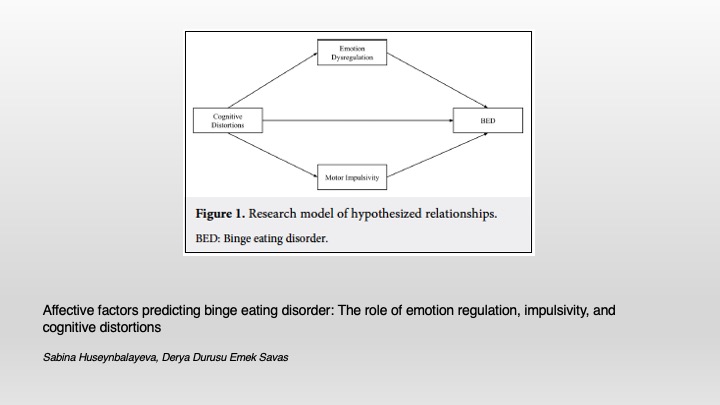
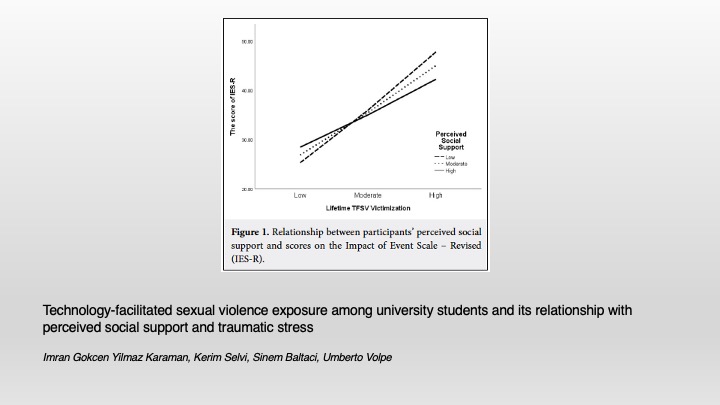
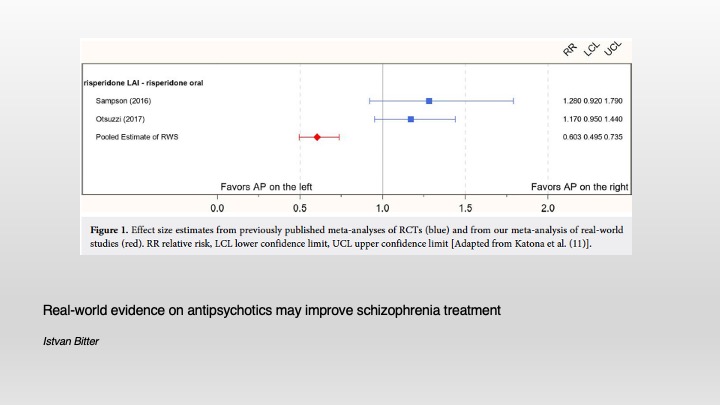

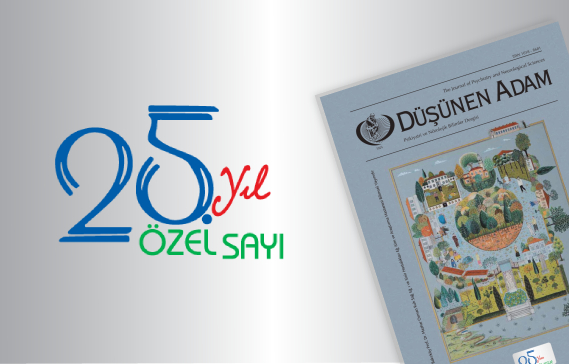
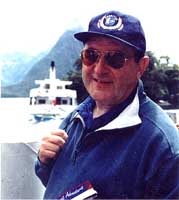


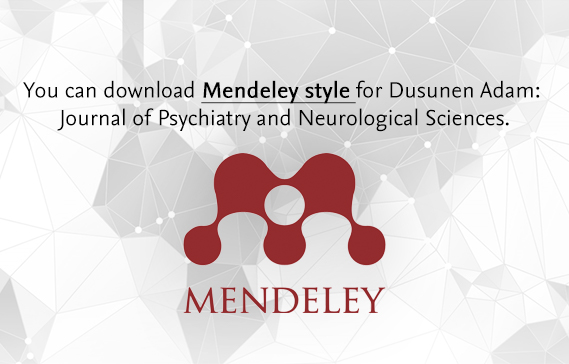
 Armagan Aral1
Armagan Aral1 













